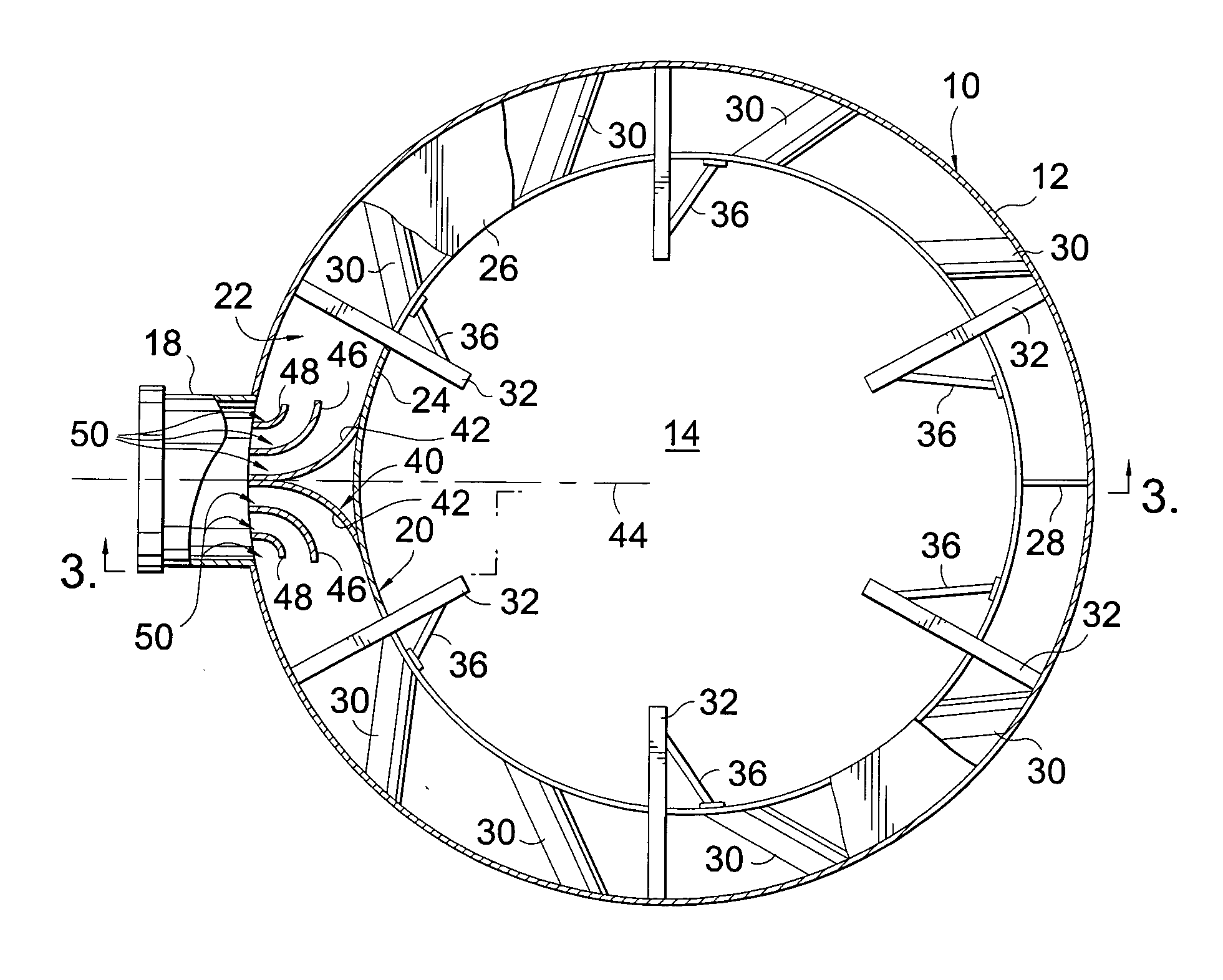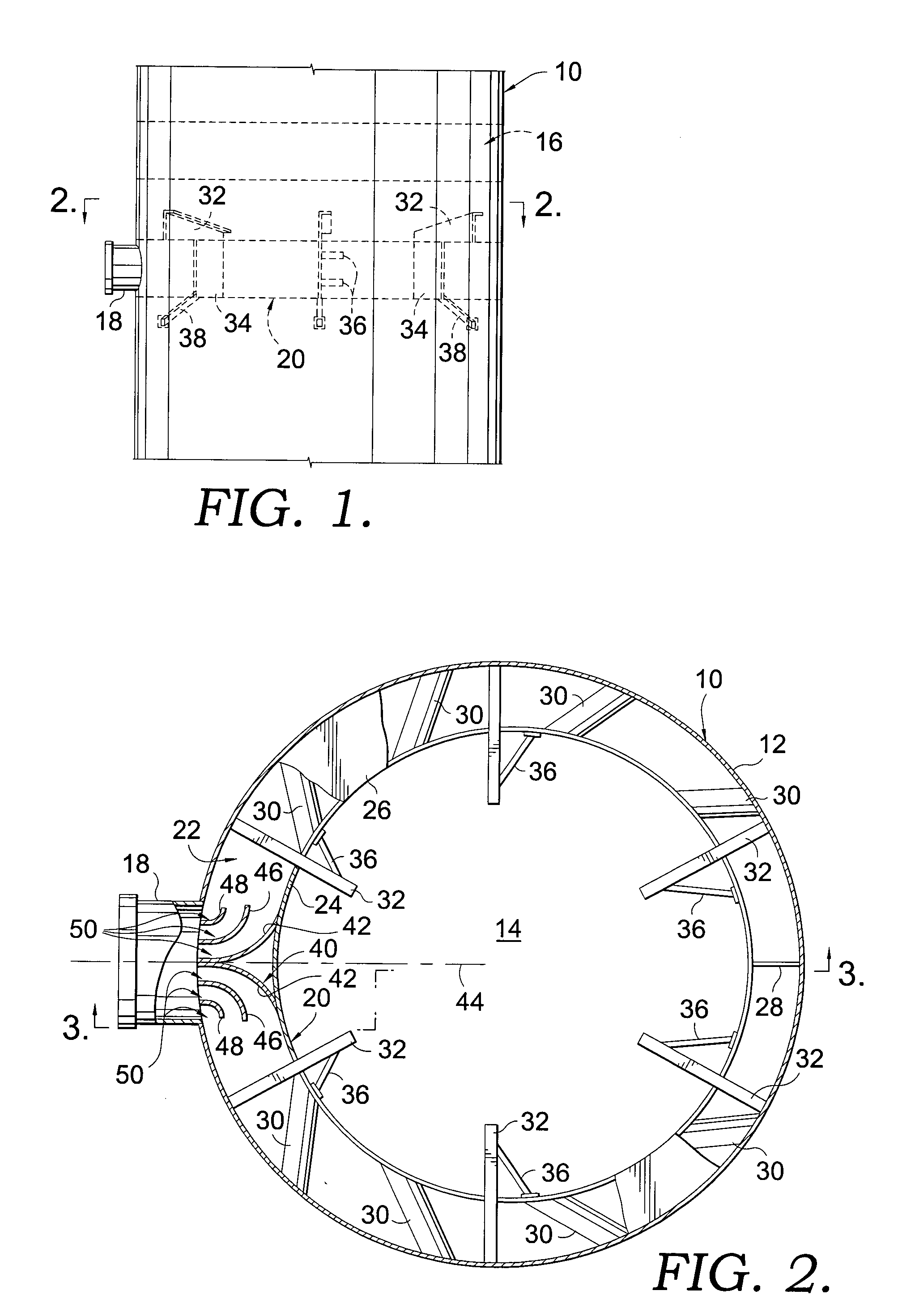Fluid stream feed device for mass transfer column
a technology of mass transfer column and feed device, which is applied in the direction of carburetor air, combustion air/fuel air treatment, and separation processes, etc., can solve the problems of increased turbulence and greater pressure drop
- Summary
- Abstract
- Description
- Claims
- Application Information
AI Technical Summary
Benefits of technology
Problems solved by technology
Method used
Image
Examples
Embodiment Construction
[0015] Turning now to the drawings in greater detail and initially to FIGS. 1-4, a column constructed in accordance with a first embodiment of the present invention is represented broadly by the numeral 10. Column 10 comprises a cylindrical exterior shell 12 and presents an open internal region 14 in which mass transfer and / or heat exchange between fluid streams occurs. A common use of such columns is to effect mass transfer between one or more downwardly flowing liquid streams and one or more ascending vapor stream. Alternatively, the fluid stream can both be liquid streams or a gas stream and a liquid stream.
[0016] Column 10 includes a zone 16 (FIG. 1) in which mass transfer devices such as trays or packing are positioned to facilitate interaction between the fluid streams flowing through the open internal region 14 of the column 10. The packing can be random or structured packing and multiple zones of such packing can be provided.
[0017] The fluid streams are directed to the col...
PUM
| Property | Measurement | Unit |
|---|---|---|
| diameter | aaaaa | aaaaa |
| pressure drop | aaaaa | aaaaa |
| diameter | aaaaa | aaaaa |
Abstract
Description
Claims
Application Information
 Login to View More
Login to View More - R&D
- Intellectual Property
- Life Sciences
- Materials
- Tech Scout
- Unparalleled Data Quality
- Higher Quality Content
- 60% Fewer Hallucinations
Browse by: Latest US Patents, China's latest patents, Technical Efficacy Thesaurus, Application Domain, Technology Topic, Popular Technical Reports.
© 2025 PatSnap. All rights reserved.Legal|Privacy policy|Modern Slavery Act Transparency Statement|Sitemap|About US| Contact US: help@patsnap.com



